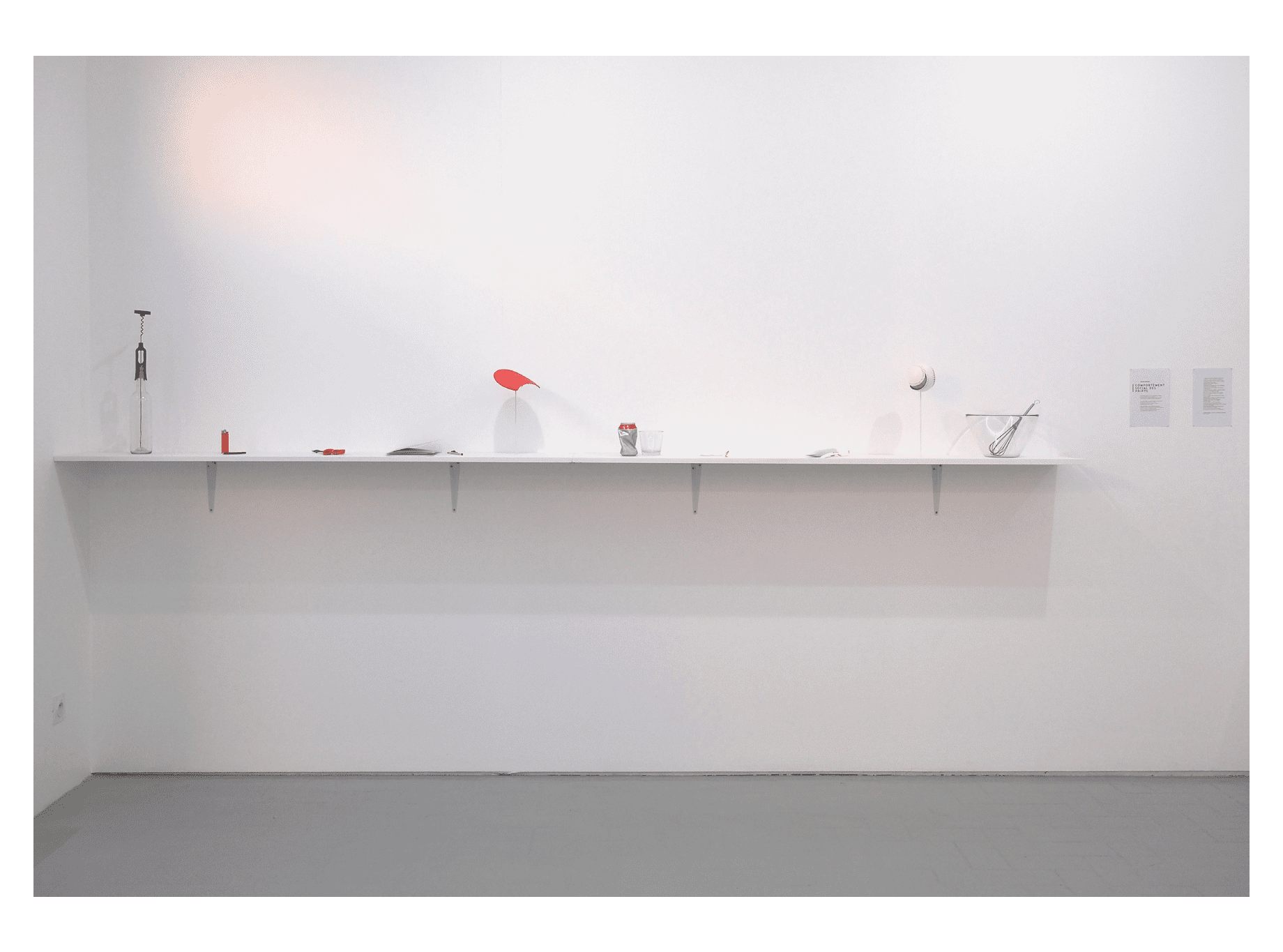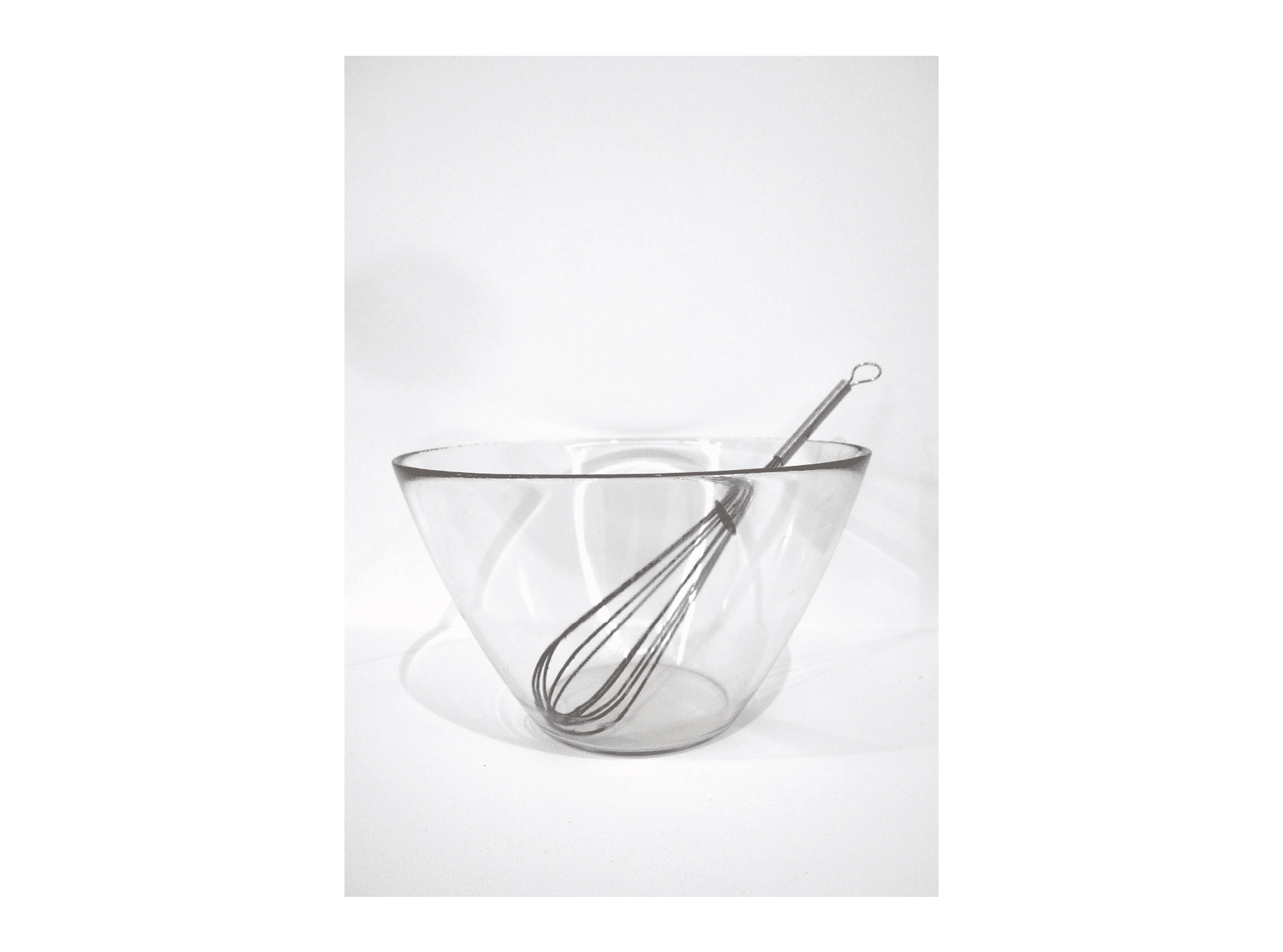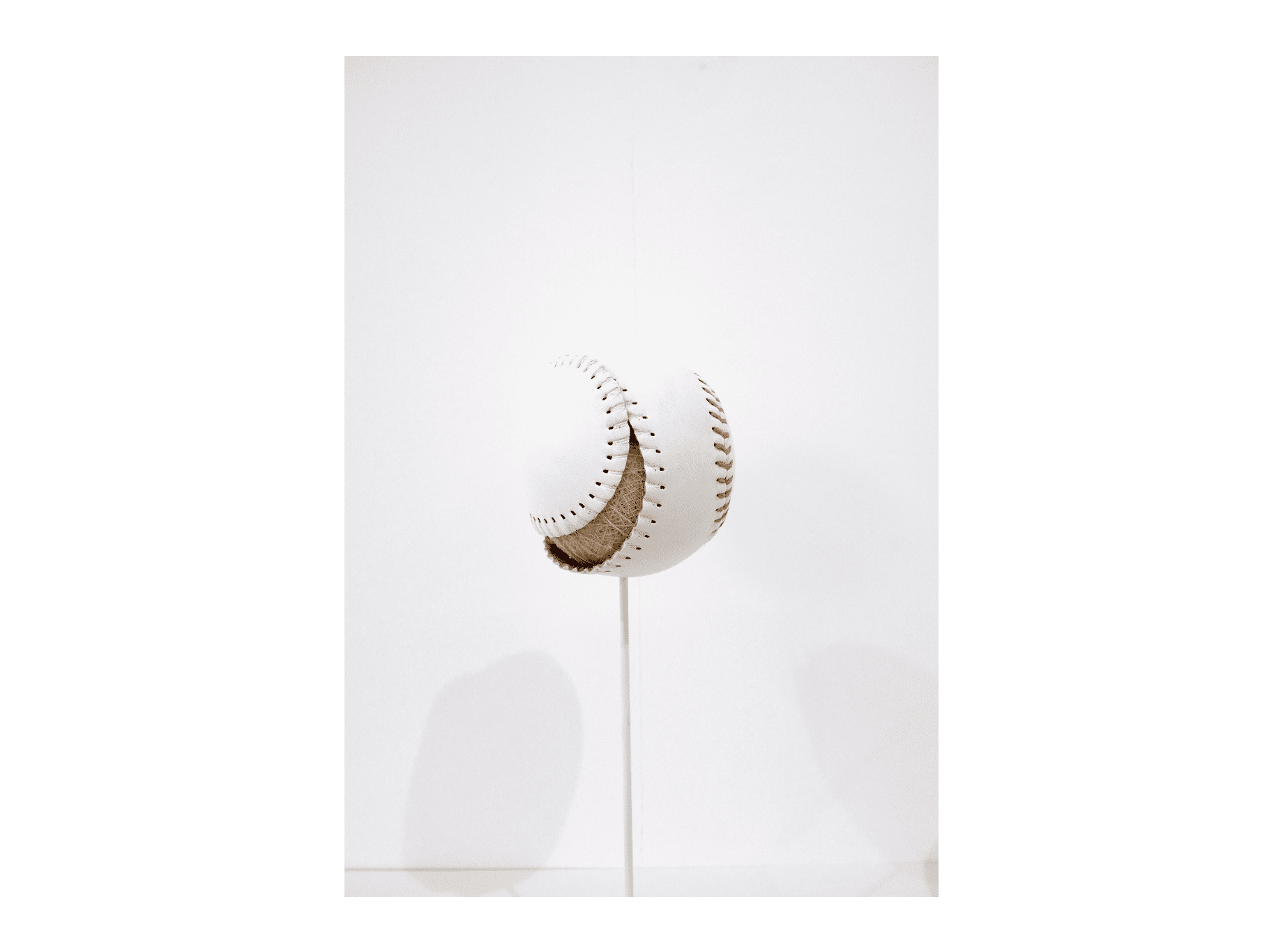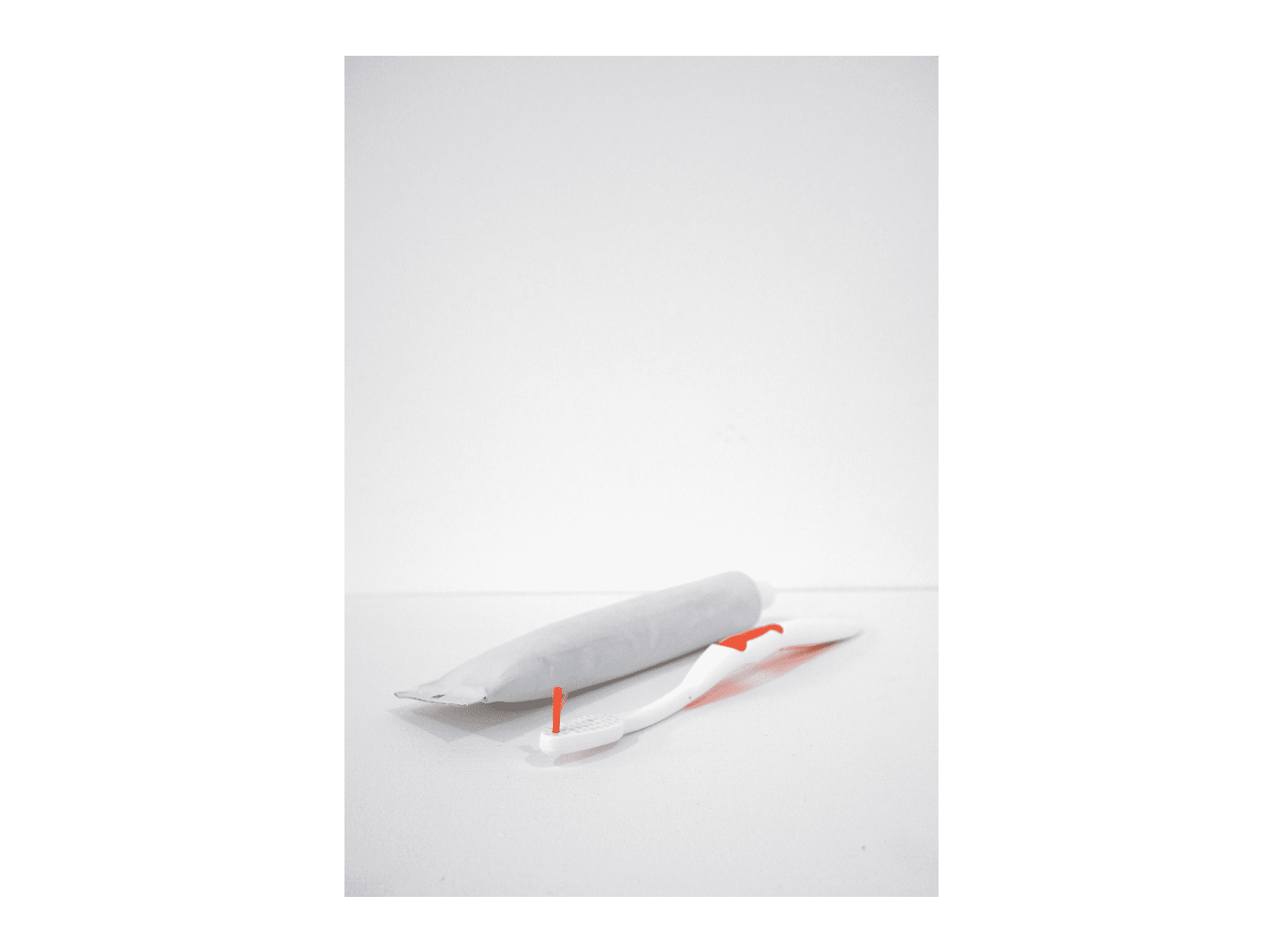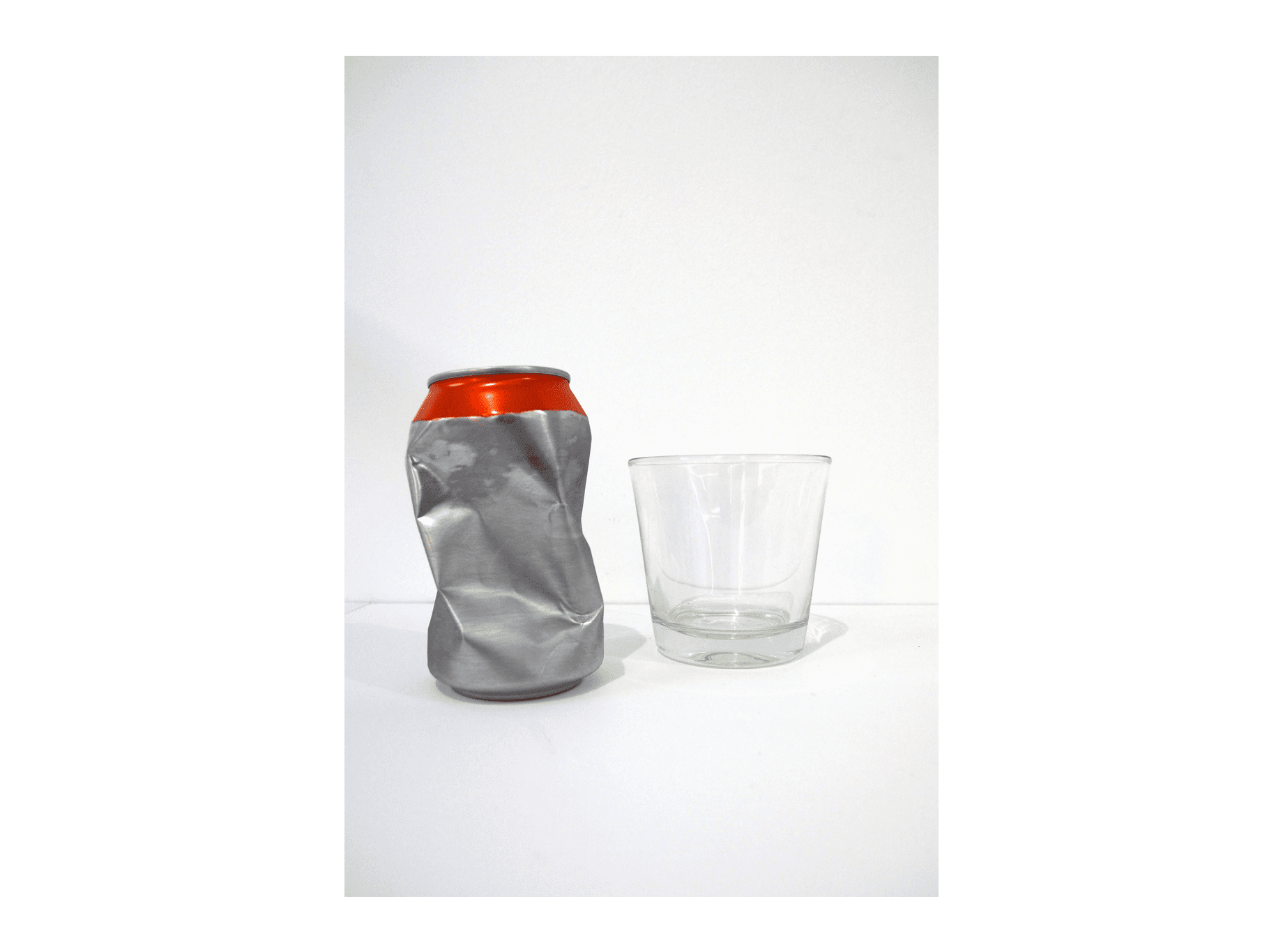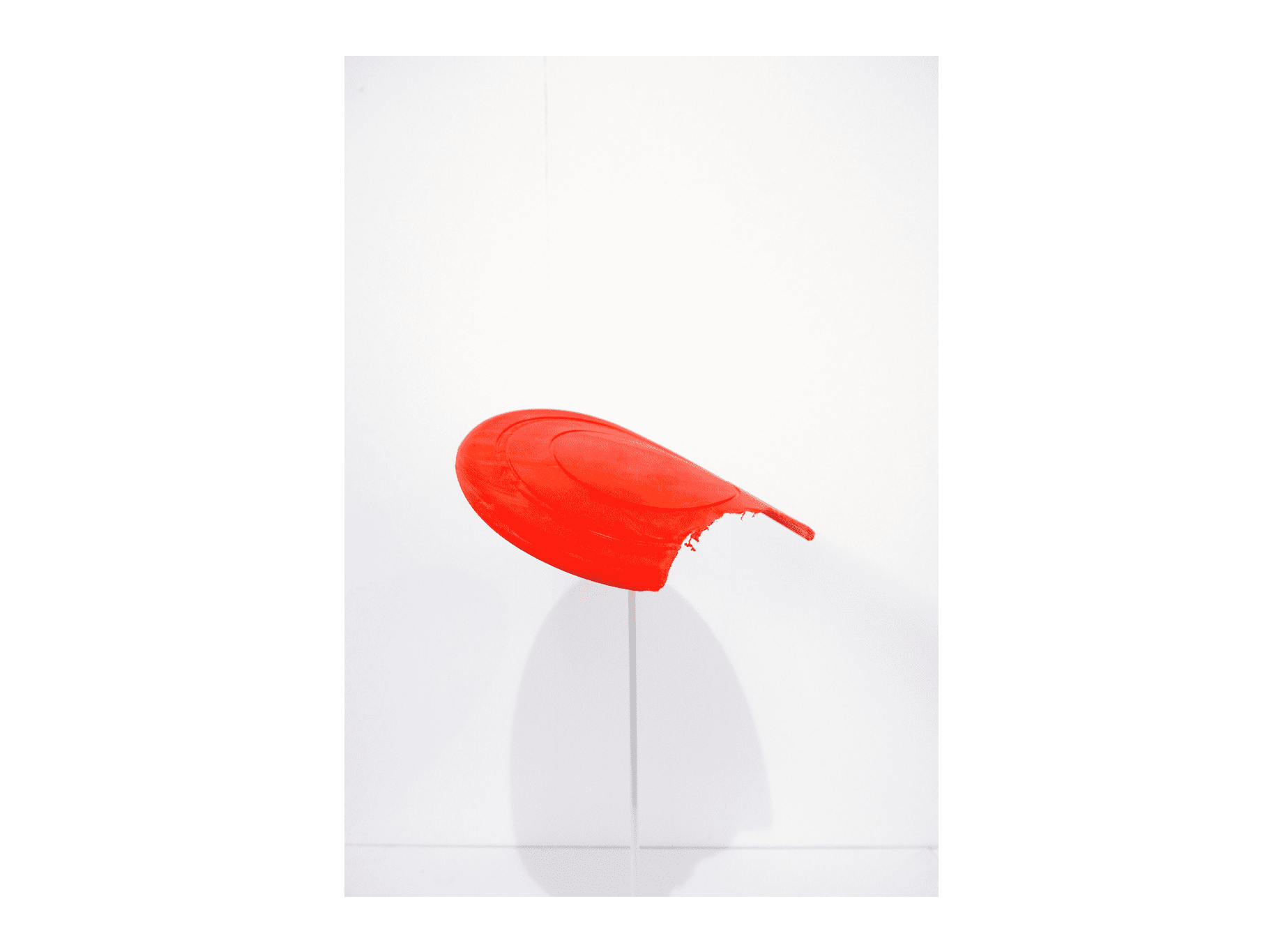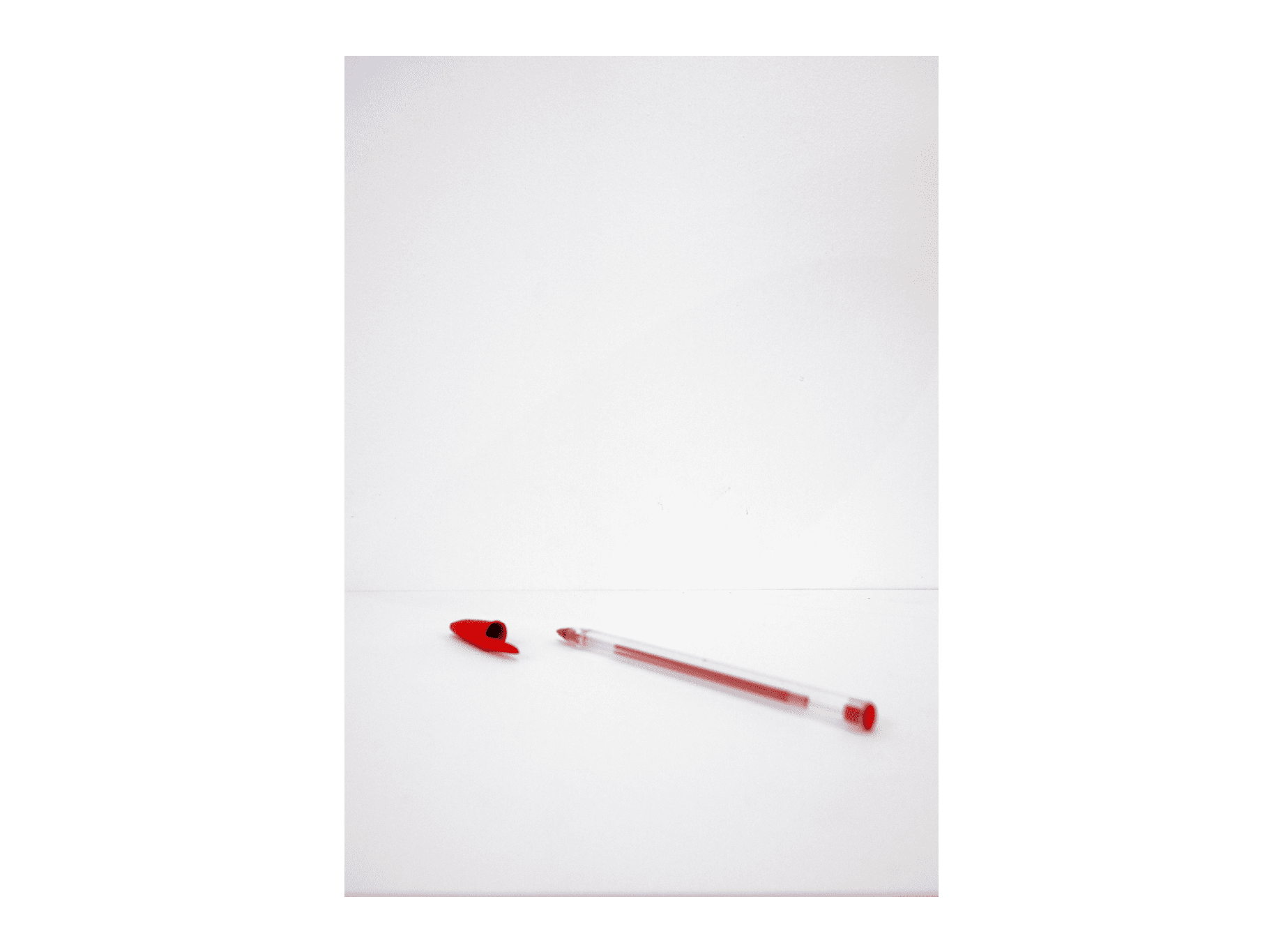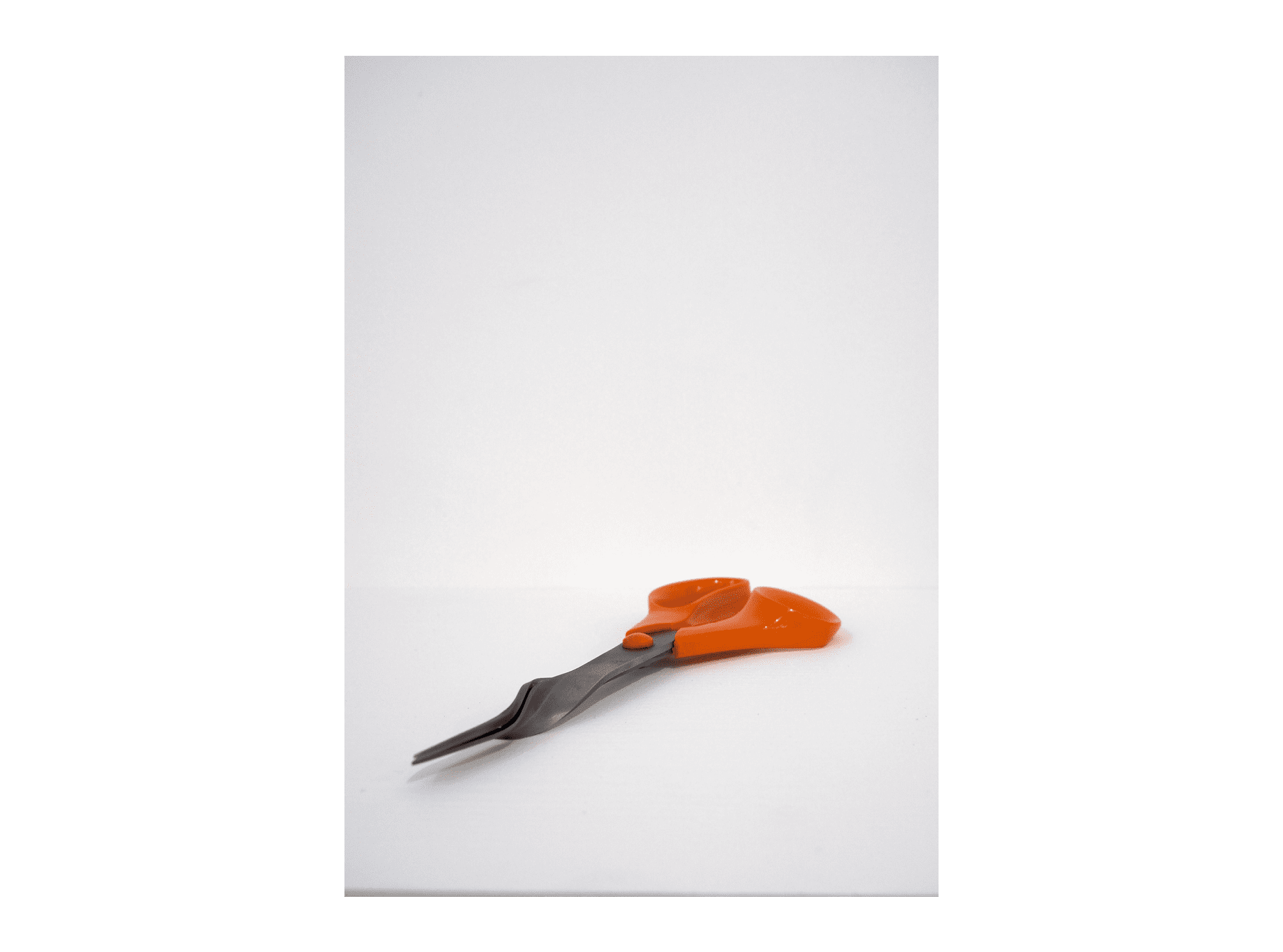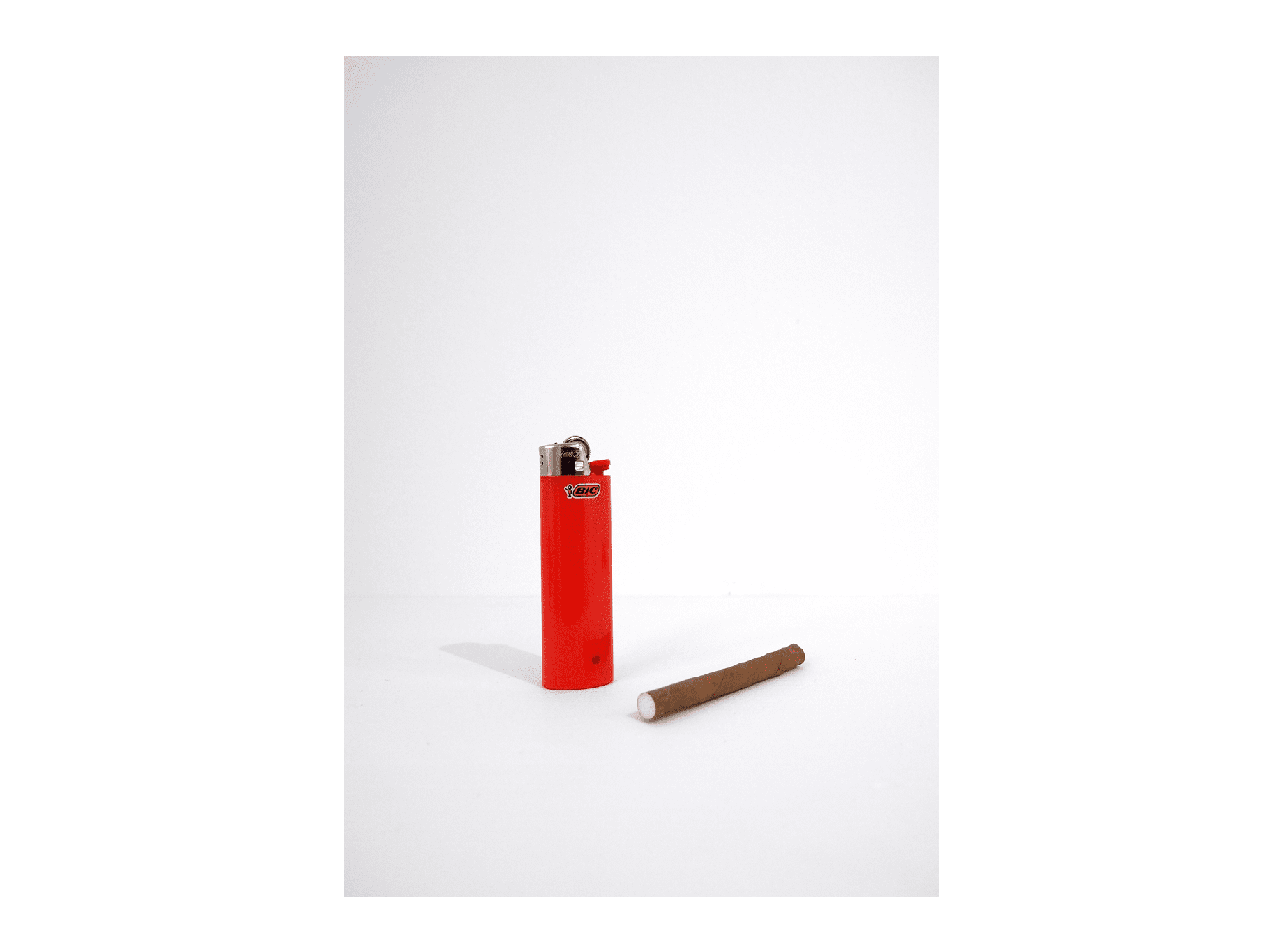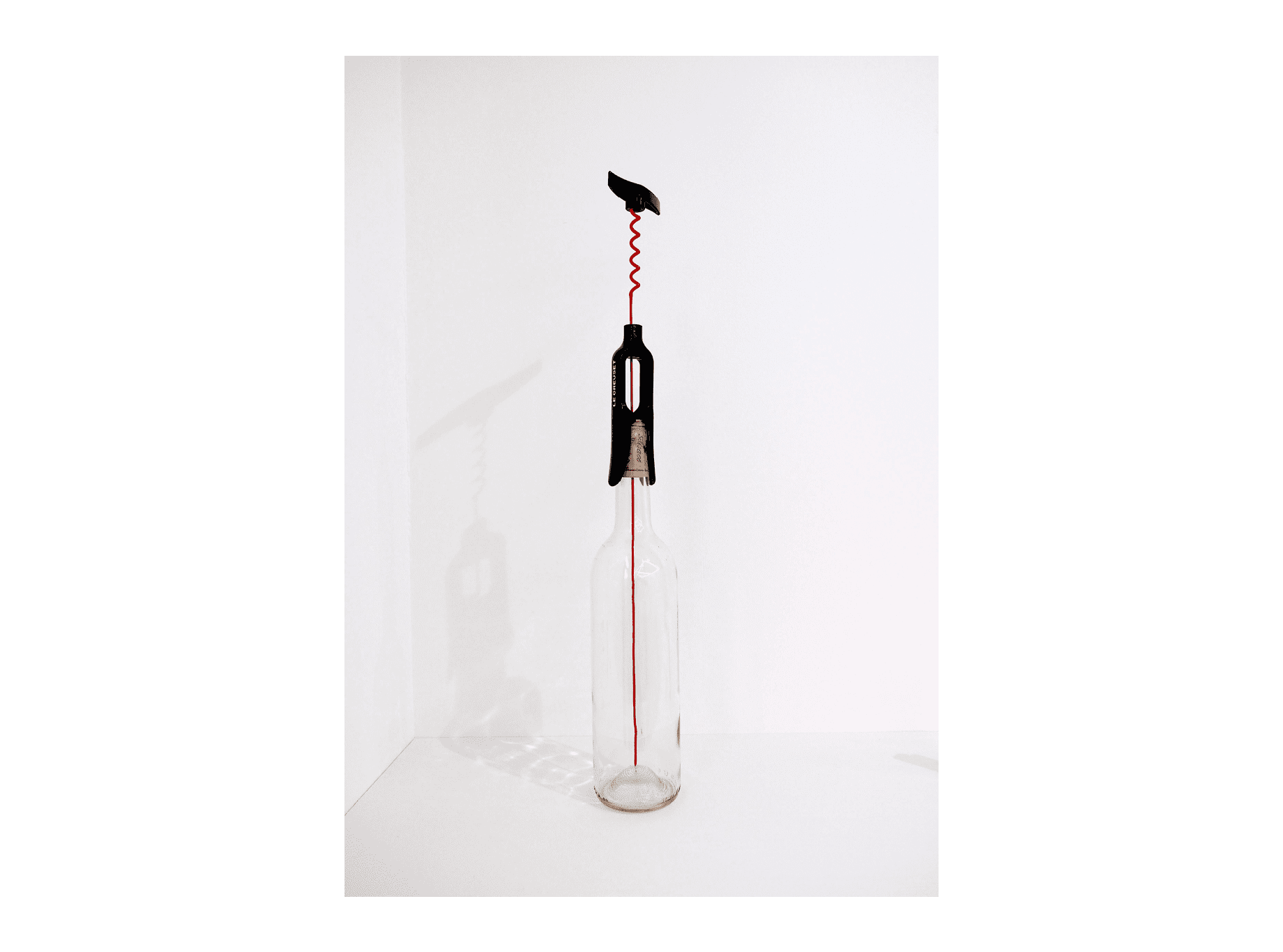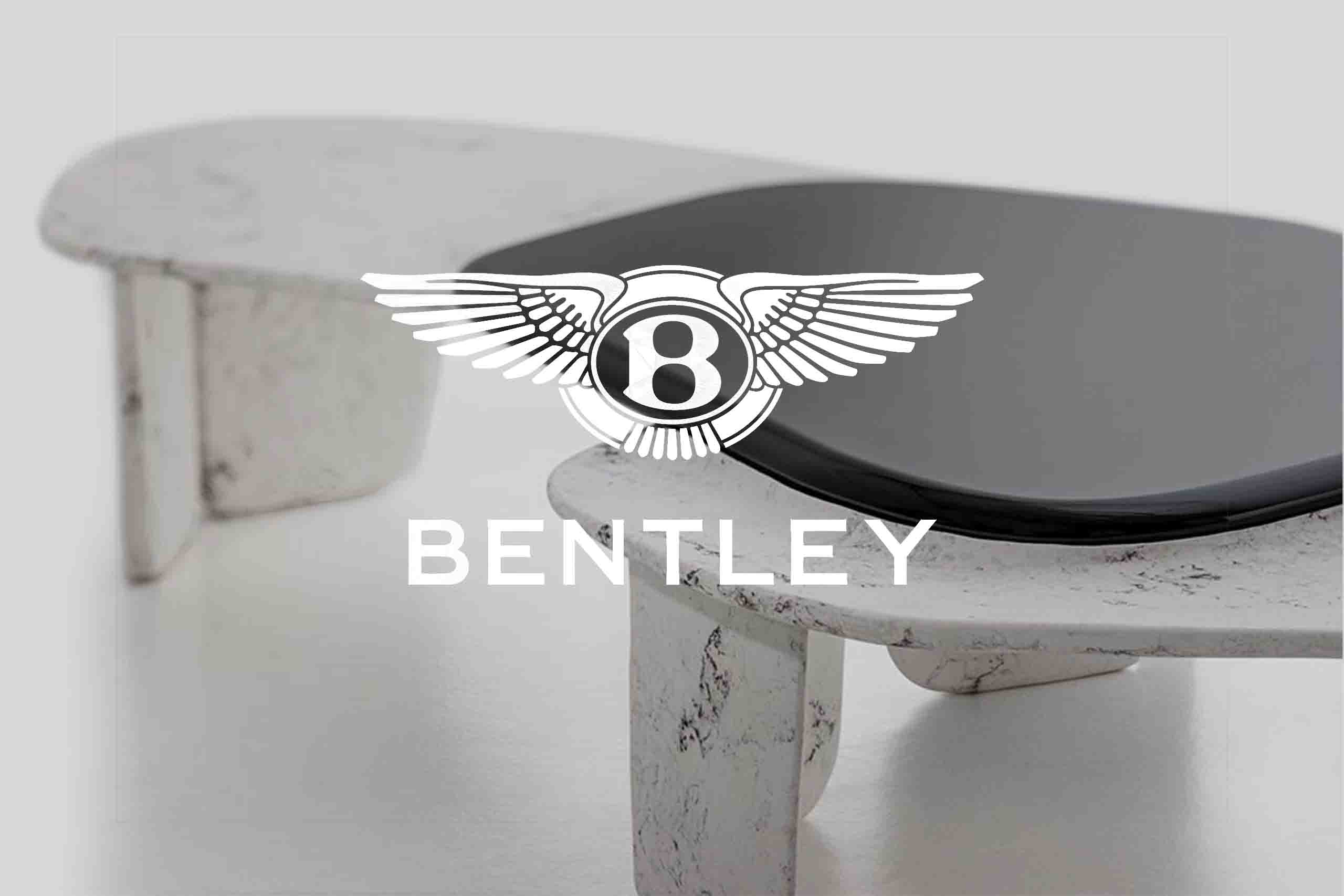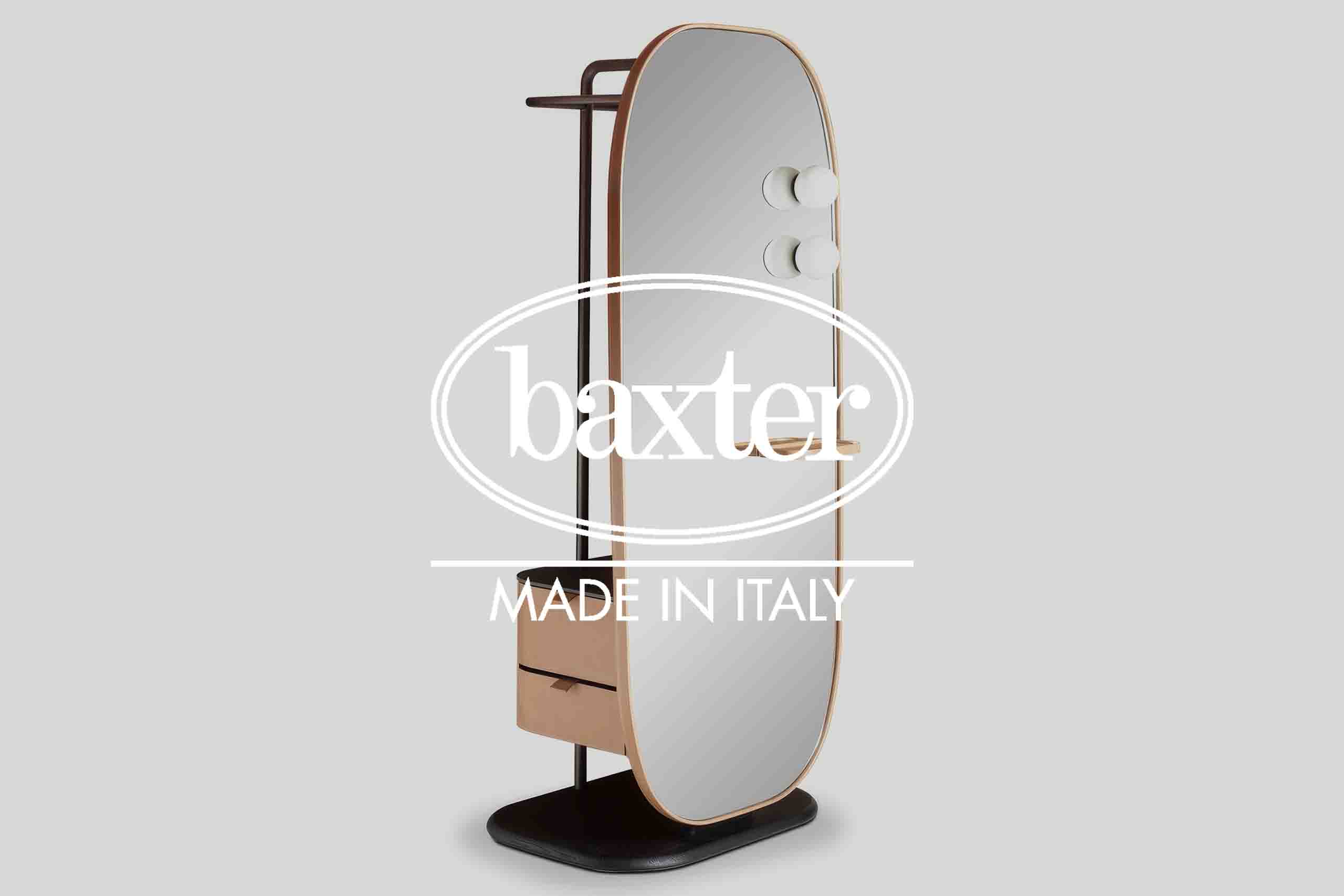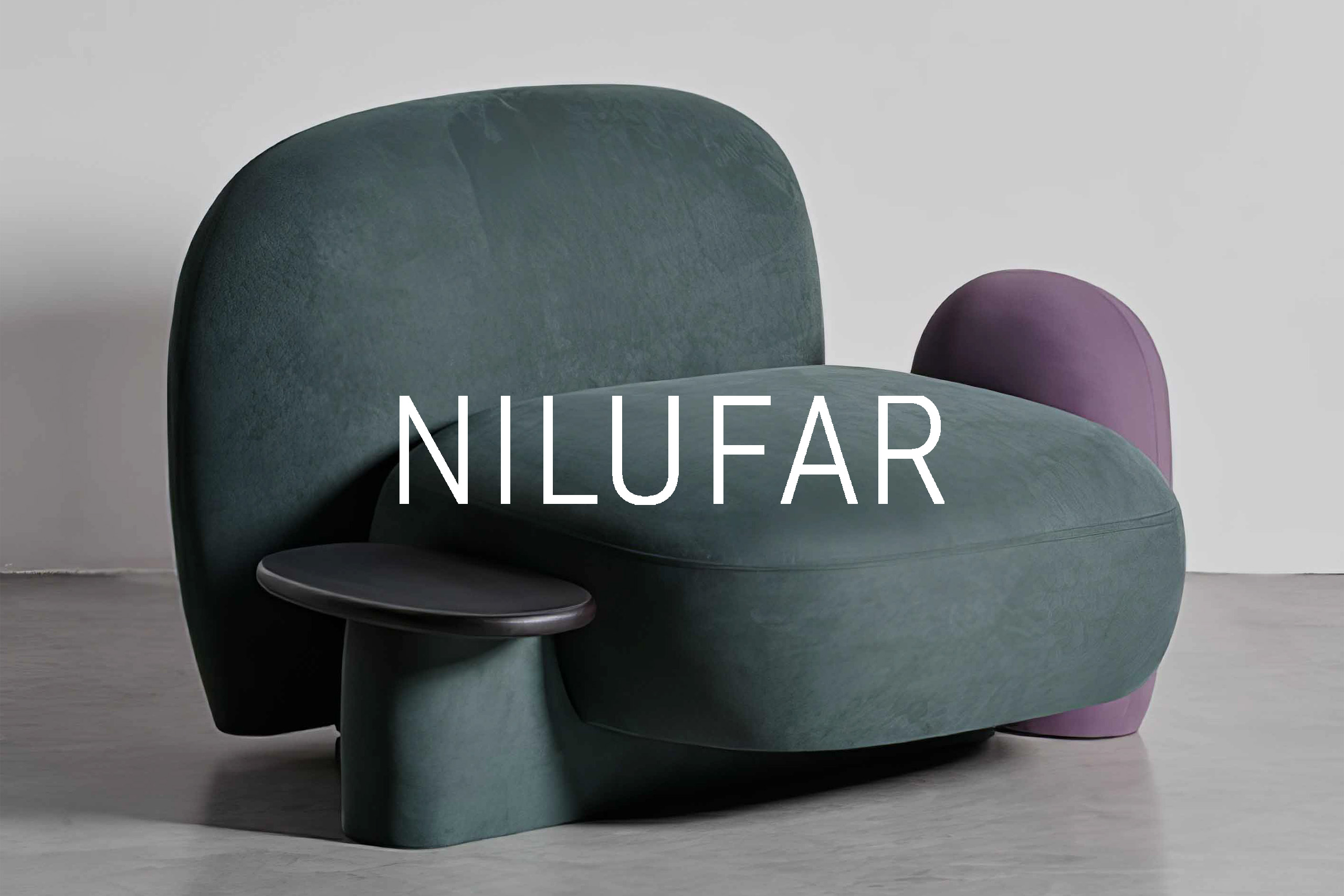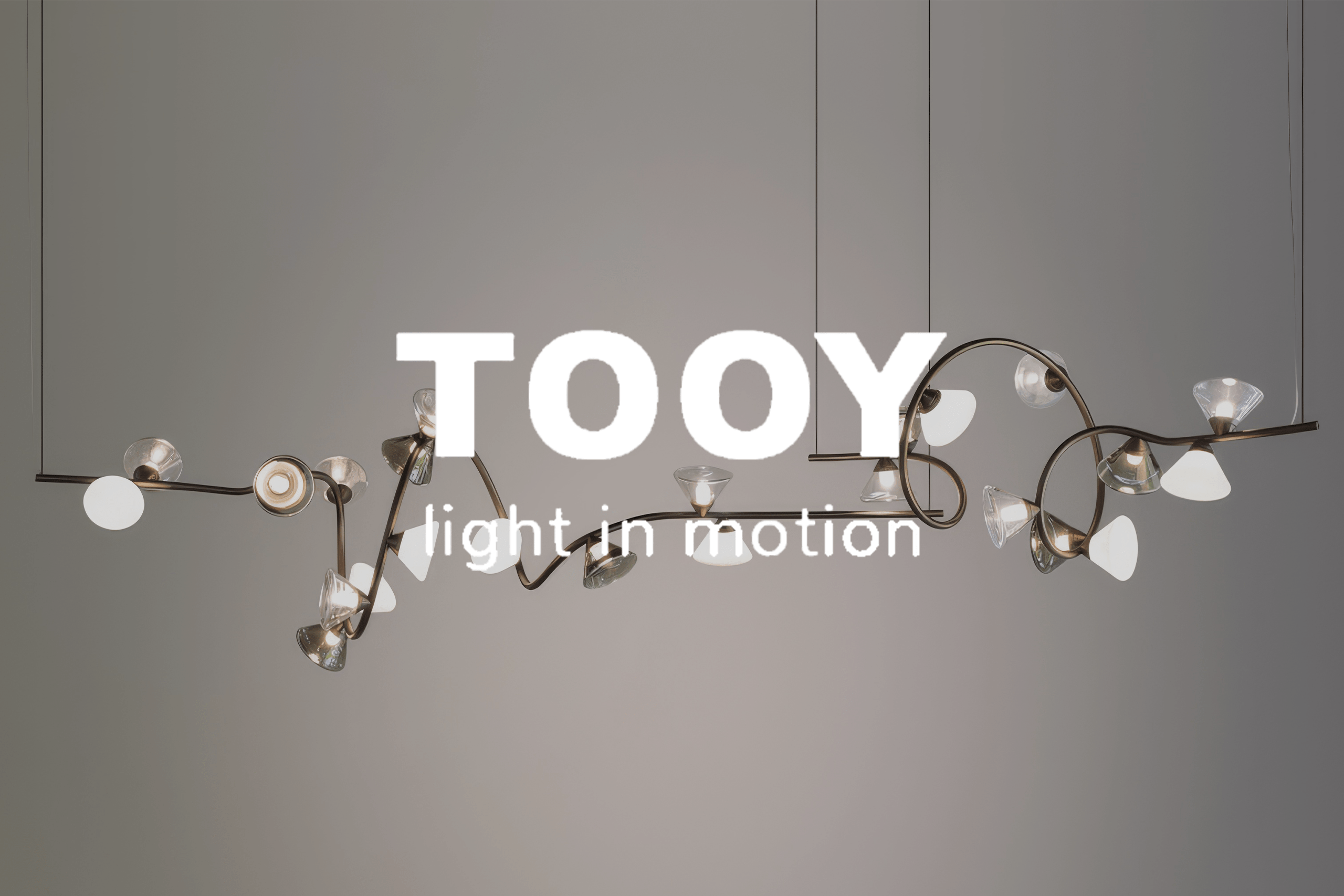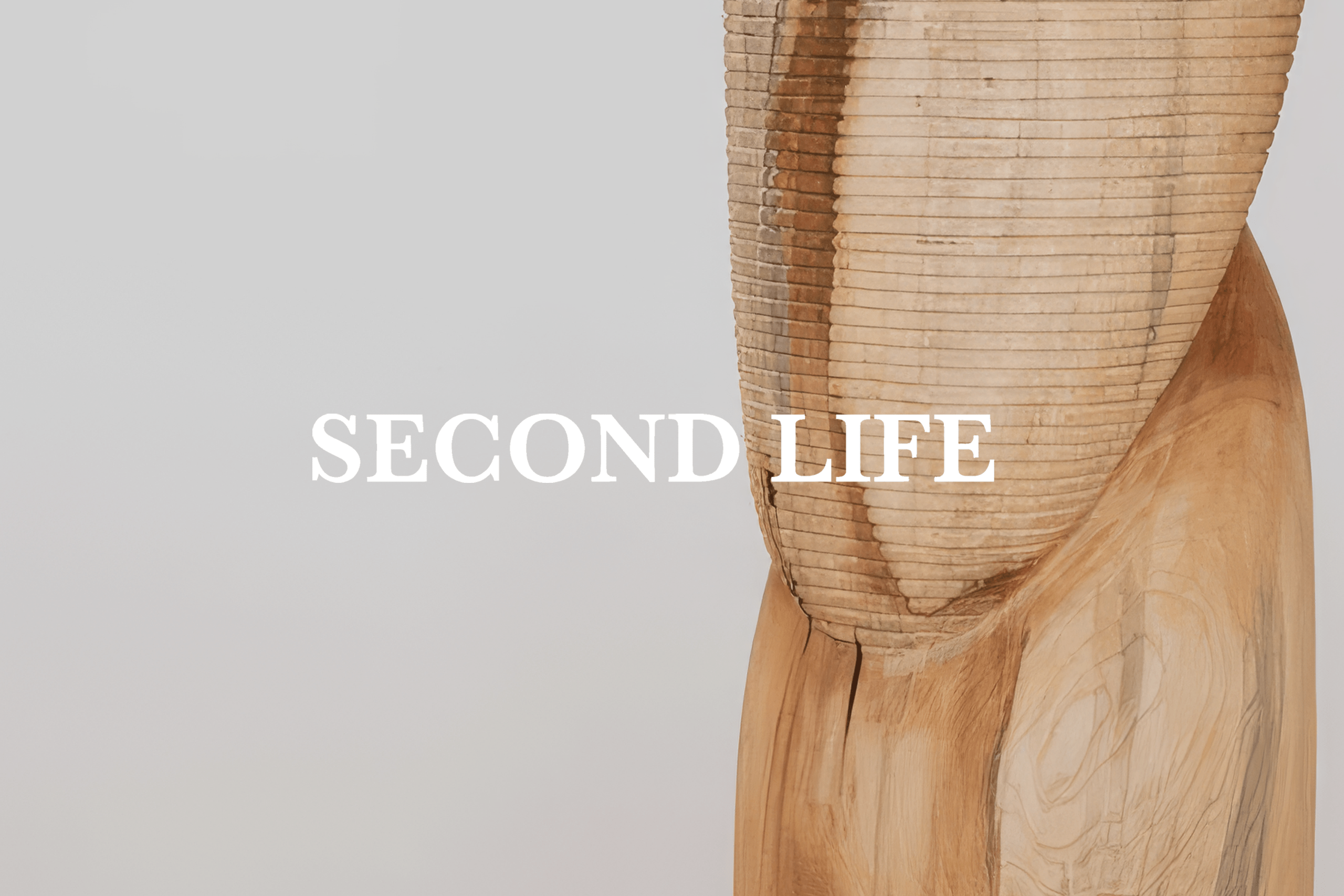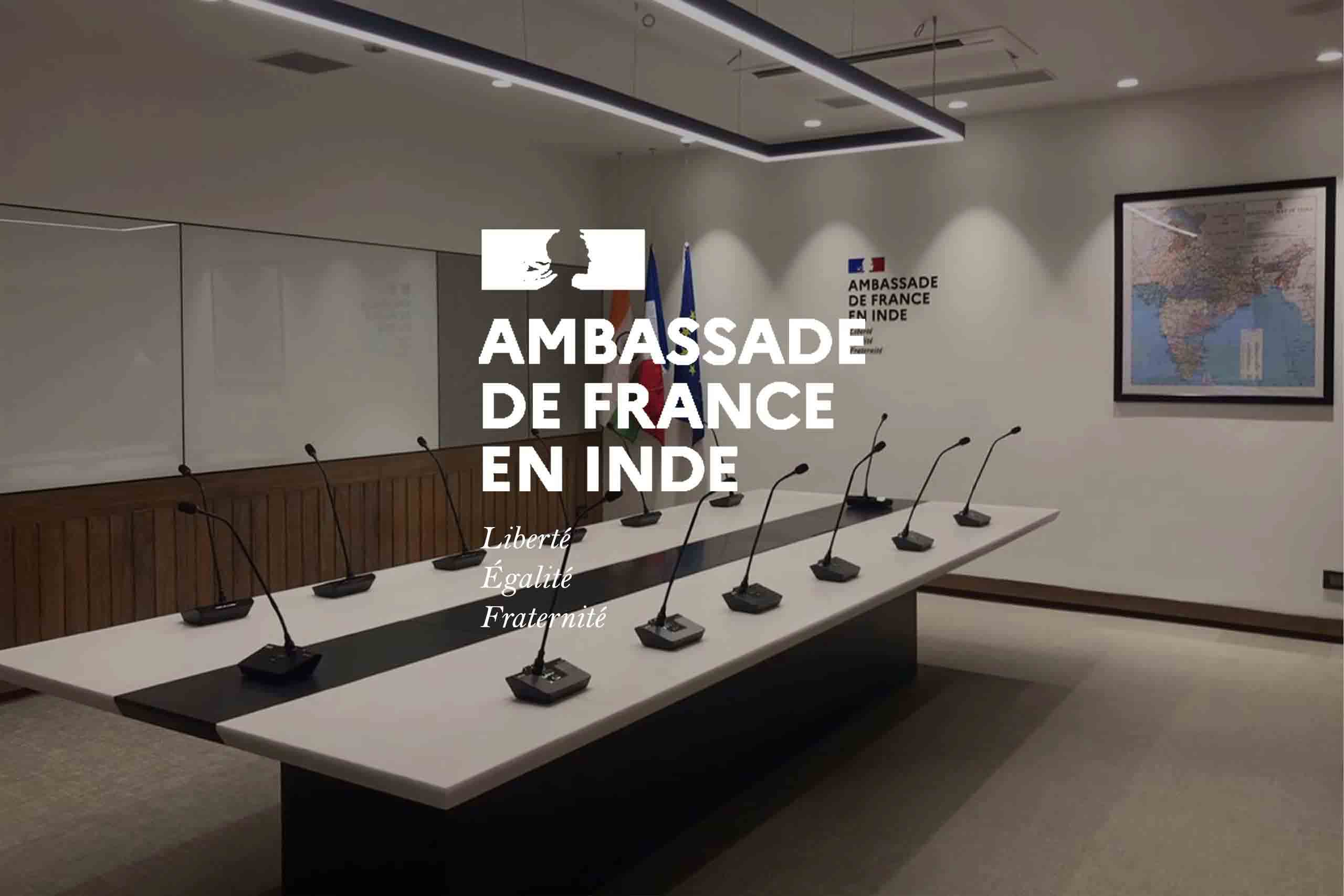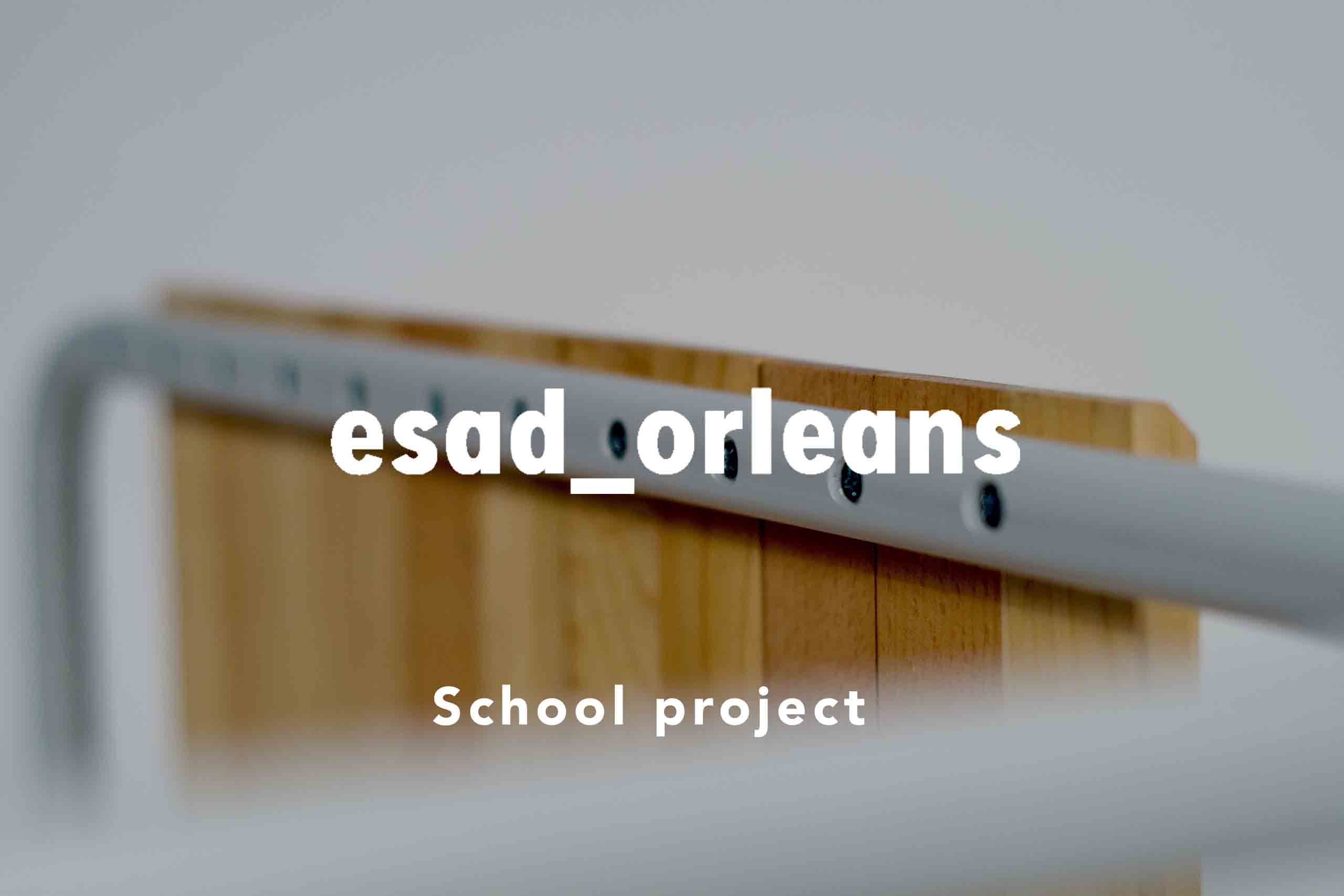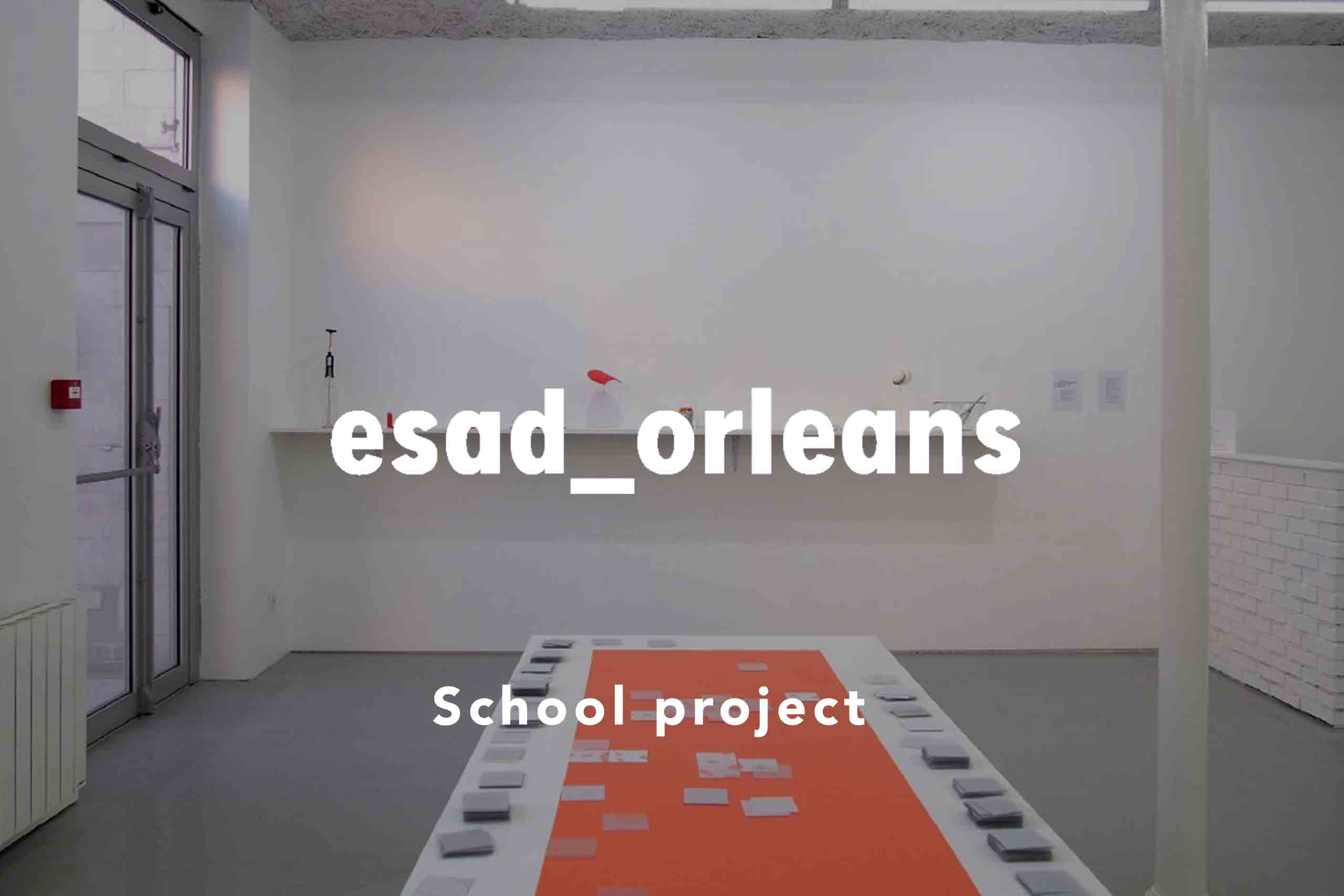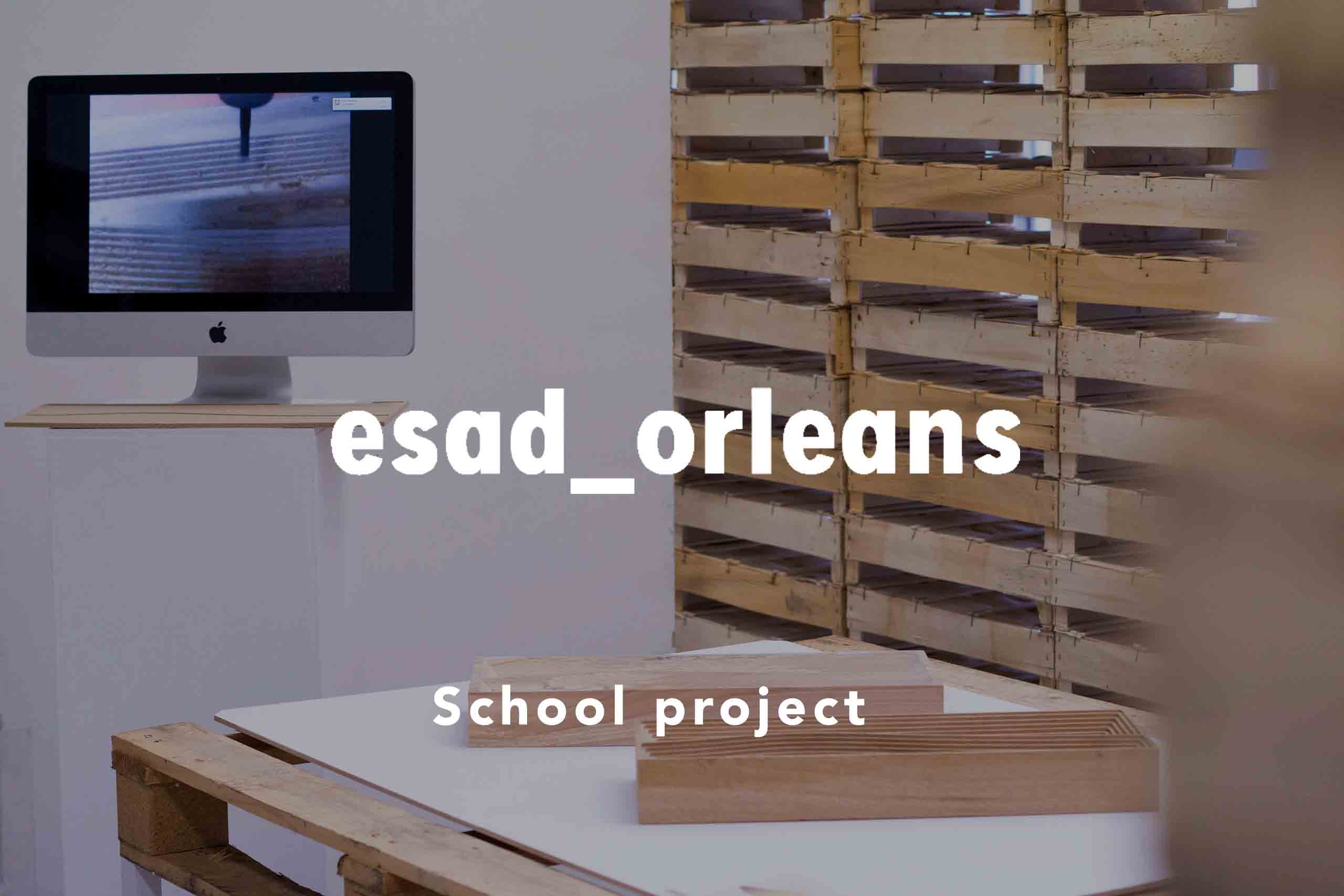THE SOCIAL
BEHAVIOR
OF OBJECTS
THE SOCIAL
BEHAVIOR
OF OBJECTS
THE SOCIAL
BEHAVIOR
OF OBJECTS
THE SOCIAL
BEHAVIOR
OF OBJECTS
THE SOCIAL
BEHAVIOR
OF OBJECTS
These different objects have a common characteristic, they are considered by Paola Antonelli, curator of Modern Art (MoMA) in New York City, as marvels of everyday design. I wanted to modify this series of objects. so that they reflect the text « it’s life », 2017, p. 36-37 by Mohamed El Kathib, French playwright and director (text below). This series of objects intends to question the relationship we have with our own existence. In a society where competitiveness is paramount, I wanted to reconsider these performative objects so that they apply to absolutely everything.
These different objects have a common characteristic, they are considered by Paola Antonelli, curator of Modern Art (MoMA) in New York City, as marvels of everyday design. I wanted to modify this series of objects. so that they reflect the text « it’s life », 2017, p. 36-37 by Mohamed El Kathib, French playwright and director (text below). This series of objects intends to question the relationship we have with our own existence. In a society where competitiveness is paramount, I wanted to reconsider these performative objects so that they apply to absolutely everything.
These different objects have a common characteristic, they are considered by Paola Antonelli, curator of Modern Art (MoMA) in New York City, as marvels of everyday design. I wanted to modify this series of objects. so that they reflect the text « it’s life », 2017, p. 36-37 by Mohamed El Kathib, French playwright and director (text below). This series of objects intends to question the relationship we have with our own existence. In a society where competitiveness is paramount, I wanted to reconsider these performative objects so that they apply to absolutely everything.
These different objects have a common characteristic, they are considered by Paola Antonelli, curator of Modern Art (MoMA) in New York City, as marvels of everyday design. I wanted to modify this series of objects. so that they reflect the text « it’s life », 2017, p. 36-37 by Mohamed El Kathib, French playwright and director (text below). This series of objects intends to question the relationship we have with our own existence. In a society where competitiveness is paramount, I wanted to reconsider these performative objects so that they apply to absolutely everything.
These different objects have a common characteristic, they are considered by Paola Antonelli, curator of Modern Art (MoMA) in New York City, as marvels of everyday design. I wanted to modify this series of objects. so that they reflect the text « it’s life », 2017, p. 36-37 by Mohamed El Kathib, French playwright and director (text below). This series of objects intends to question the relationship we have with our own existence. In a society where competitiveness is paramount, I wanted to reconsider these performative objects so that they apply to absolutely everything.
There are days when I want to be sad. Sad to die.
There are days when I do not want to be a winner
Where I want nothing but merder all the way
I do not want to succeed, I do not want to be the first
Not want to be faultless
Not want to make the good meeting
Whoever changes everything
I do not want to change anything and do nothing that can have no success
I want to get to the foot of the podium, arrive when the light goes out
Stay at the bottom of the ladder, below sea level, at - 7 on the Richeter scale
Apply to absolutely miss everything
Zero career, zero love life, zero social life
But for that it would be necessary for children to teach us to have faith in failure
Let us be shown how to be stepped on and love his defeat
How to become a loser with panache, not a small loser of the week at a discount, no
To apply to lose big and that, it requires determination
To lose with audacity, to wallow with class, to benefit from every second of his social fall
Derail the little machine of war that is made, never to win
No longer be programmed to succeed but to live.
And life is not a Tagada strawberry
Life is not a hollywood chewing gum
And even less an ad for the soap Tahiti Douche.
El Kathib Mohamed, C’est la vie, The Untimely Solitaires, 2017, p. 36-37
There are days when I want to be sad. Sad to die.
There are days when I do not want to be a winner
Where I want nothing but merder all the way
I do not want to succeed, I do not want to be the first
Not want to be faultless
Not want to make the good meeting
Whoever changes everything
I do not want to change anything and do nothing that can have no success
I want to get to the foot of the podium, arrive when the light goes out
Stay at the bottom of the ladder, below sea level, at - 7 on the Richeter scale
Apply to absolutely miss everything
Zero career, zero love life, zero social life
But for that it would be necessary for children to teach us to have faith in failure
Let us be shown how to be stepped on and love his defeat
How to become a loser with panache, not a small loser of the week at a discount, no
To apply to lose big and that, it requires determination
To lose with audacity, to wallow with class, to benefit from every second of his social fall
Derail the little machine of war that is made, never to win
No longer be programmed to succeed but to live.
And life is not a Tagada strawberry
Life is not a hollywood chewing gum
And even less an ad for the soap Tahiti Douche.
El Kathib Mohamed, C’est la vie, The Untimely Solitaires, 2017, p. 36-37
There are days when I want to be sad. Sad to die.
There are days when I do not want to be a winner
Where I want nothing but merder all the way
I do not want to succeed, I do not want to be the first
Not want to be faultless
Not want to make the good meeting
Whoever changes everything
I do not want to change anything and do nothing that can have no success
I want to get to the foot of the podium, arrive when the light goes out
Stay at the bottom of the ladder, below sea level, at - 7 on the Richeter scale
Apply to absolutely miss everything
Zero career, zero love life, zero social life
But for that it would be necessary for children to teach us to have faith in failure
Let us be shown how to be stepped on and love his defeat
How to become a loser with panache, not a small loser of the week at a discount, no
To apply to lose big and that, it requires determination
To lose with audacity, to wallow with class, to benefit from every second of his social fall
Derail the little machine of war that is made, never to win
No longer be programmed to succeed but to live.
And life is not a Tagada strawberry
Life is not a hollywood chewing gum
And even less an ad for the soap Tahiti Douche.
El Kathib Mohamed, C’est la vie, The Untimely Solitaires, 2017, p. 36-37
There are days when I want to be sad. Sad to die.
There are days when I do not want to be a winner
Where I want nothing but merder all the way
I do not want to succeed, I do not want to be the first
Not want to be faultless
Not want to make the good meeting
Whoever changes everything
I do not want to change anything and do nothing that can have no success
I want to get to the foot of the podium, arrive when the light goes out
Stay at the bottom of the ladder, below sea level, at - 7 on the Richeter scale
Apply to absolutely miss everything
Zero career, zero love life, zero social life
But for that it would be necessary for children to teach us to have faith in failure
Let us be shown how to be stepped on and love his defeat
How to become a loser with panache, not a small loser of the week at a discount, no
To apply to lose big and that, it requires determination
To lose with audacity, to wallow with class, to benefit from every second of his social fall
Derail the little machine of war that is made, never to win
No longer be programmed to succeed but to live.
And life is not a Tagada strawberry
Life is not a hollywood chewing gum
And even less an ad for the soap Tahiti Douche.
El Kathib Mohamed, C’est la vie, The Untimely Solitaires, 2017, p. 36-37
There are days when I want to be sad. Sad to die.
There are days when I do not want to be a winner
Where I want nothing but merder all the way
I do not want to succeed, I do not want to be the first
Not want to be faultless
Not want to make the good meeting
Whoever changes everything
I do not want to change anything and do nothing that can have no success
I want to get to the foot of the podium, arrive when the light goes out
Stay at the bottom of the ladder, below sea level, at - 7 on the Richeter scale
Apply to absolutely miss everything
Zero career, zero love life, zero social life
But for that it would be necessary for children to teach us to have faith in failure
Let us be shown how to be stepped on and love his defeat
How to become a loser with panache, not a small loser of the week at a discount, no
To apply to lose big and that, it requires determination
To lose with audacity, to wallow with class, to benefit from every second of his social fall
Derail the little machine of war that is made, never to win
No longer be programmed to succeed but to live.
And life is not a Tagada strawberry
Life is not a hollywood chewing gum
And even less an ad for the soap Tahiti Douche.
El Kathib Mohamed, C’est la vie, The Untimely Solitaires, 2017, p. 36-37
1 / whisk n.d . <1577
Unknown designer Stainless steel
The whip, a word whose ancient Nordic root indicates a rapid movement, was first recorded as an instrument for beating eggs in 1577, although it certainly existed even before, perhaps under names different according to different cultures. The way it is built today, by joining steel buckles in a molded handle, is elegant and simple, a bright example of anonymous design.
1 / whisk n.d . <1577
Unknown designer Stainless steel
The whip, a word whose ancient Nordic root indicates a rapid movement, was first recorded as an instrument for beating eggs in 1577, although it certainly existed even before, perhaps under names different according to different cultures. The way it is built today, by joining steel buckles in a molded handle, is elegant and simple, a bright example of anonymous design.
1 / whisk n.d . <1577
Unknown designer Stainless steel
The whip, a word whose ancient Nordic root indicates a rapid movement, was first recorded as an instrument for beating eggs in 1577, although it certainly existed even before, perhaps under names different according to different cultures. The way it is built today, by joining steel buckles in a molded handle, is elegant and simple, a bright example of anonymous design.
1 / whisk n.d . <1577
Unknown designer Stainless steel
The whip, a word whose ancient Nordic root indicates a rapid movement, was first recorded as an instrument for beating eggs in 1577, although it certainly existed even before, perhaps under names different according to different cultures. The way it is built today, by joining steel buckles in a molded handle, is elegant and simple, a bright example of anonymous design.
1 / whisk n.d . <1577
Unknown designer Stainless steel
The whip, a word whose ancient Nordic root indicates a rapid movement, was first recorded as an instrument for beating eggs in 1577, although it certainly existed even before, perhaps under names different according to different cultures. The way it is built today, by joining steel buckles in a molded handle, is elegant and simple, a bright example of anonymous design.
2 / baseball, 1870s
Alfred J. Reach, American, 1840-1928
Benjamin Shibe, American, 1833-1922
Manufacturer: Rawling, United States
John Van Horn, New York, and Harvey Rose, Brooklyn, were the first baseball ball makers in the 1850s. It was designed with a molten rubber core wrapped in sheepskin. In 1875, John Giblin patented a ball made of a core of compressed palm leaves, surrounded by woolen threads and covered with rubber. Four months later, Boston’s Samuel Hipkiss patented a ball with a bell inside, thinking it would help the referees. It was then that their first baseball was seamlessly made, a design choice they made thinking they would keep the ball intact longer. They quickly found that it made curvatures almost impossible, so they replaced it with the double-seam model we know today.
2 / baseball, 1870s
Alfred J. Reach, American, 1840-1928
Benjamin Shibe, American, 1833-1922
Manufacturer: Rawling, United States
John Van Horn, New York, and Harvey Rose, Brooklyn, were the first baseball ball makers in the 1850s. It was designed with a molten rubber core wrapped in sheepskin. In 1875, John Giblin patented a ball made of a core of compressed palm leaves, surrounded by woolen threads and covered with rubber. Four months later, Boston’s Samuel Hipkiss patented a ball with a bell inside, thinking it would help the referees. It was then that their first baseball was seamlessly made, a design choice they made thinking they would keep the ball intact longer. They quickly found that it made curvatures almost impossible, so they replaced it with the double-seam model we know today.
2 / baseball, 1870s
Alfred J. Reach, American, 1840-1928
Benjamin Shibe, American, 1833-1922
Manufacturer: Rawling, United States
John Van Horn, New York, and Harvey Rose, Brooklyn, were the first baseball ball makers in the 1850s. It was designed with a molten rubber core wrapped in sheepskin. In 1875, John Giblin patented a ball made of a core of compressed palm leaves, surrounded by woolen threads and covered with rubber.
Four months later, Boston’s Samuel Hipkiss patented a ball with a bell inside, thinking it would help the referees. It was then that their first baseball was seamlessly made, a design choice they made thinking they would keep the ball intact longer. They quickly found that it made curvatures almost impossible, so they replaced it with the double-seam model we know today.
2 / baseball, 1870s
Alfred J. Reach, American, 1840-1928
Benjamin Shibe, American, 1833-1922
Manufacturer: Rawling, United States
John Van Horn, New York, and Harvey Rose, Brooklyn, were the first baseball ball makers in the 1850s. It was designed with a molten rubber core wrapped in sheepskin. In 1875, John Giblin patented a ball made of a core of compressed palm leaves, surrounded by woolen threads and covered with rubber.
Four months later, Boston’s Samuel Hipkiss patented a ball with a bell inside, thinking it would help the referees. It was then that their first baseball was seamlessly made, a design choice they made thinking they would keep the ball intact longer. They quickly found that it made curvatures almost impossible, so they replaced it with the double-seam model we know today.
2 / baseball, 1870s
Alfred J. Reach, American, 1840-1928
Benjamin Shibe, American, 1833-1922
Manufacturer: Rawling, United States
John Van Horn, New York, and Harvey Rose, Brooklyn, were the first baseball ball makers in the 1850s. It was designed with a molten rubber core wrapped in sheepskin. In 1875, John Giblin patented a ball made of a core of compressed palm leaves, surrounded by woolen threads and covered with rubber.
Four months later, Boston’s Samuel Hipkiss patented a ball with a bell inside, thinking it would help the referees. It was then that their first baseball was seamlessly made, a design choice they made thinking they would keep the ball intact longer. They quickly found that it made curvatures almost impossible, so they replaced it with the double-seam model we know today.
3 / toothbrush, 1885
H.N. Wadsworth, américain, 1819-1896
The use of various techniques to clean the teeth goes back to the highest antiquity.
It is from the Middle Ages that the use of the toothbrush is lost and that people are content to rinse their mouths with water, a wine soup or rub their teeth with a cloth. The first figuration of a toothbrush with handle and bristles in natural silk appeared in 1498. It was then made with boar bristles (hair sufficiently thin and rigid) stitched on a wooden handle or ivory. The first patent was filed by H.N. Wadsworth in 1850 in the United States, but mass production in America began only in 1885. It was then made of bone, and the bristles were made of Siberian pork silk. The major disadvantage of pork silk is that the brush dried out badly, that the bacteria swarmed and that it was quickly bald.
3 / toothbrush, 1885
H.N. Wadsworth, américain, 1819-1896
The use of various techniques to clean the teeth goes back to the highest antiquity.
It is from the Middle Ages that the use of the toothbrush is lost and that people are content to rinse their mouths with water, a wine soup or rub their teeth with a cloth. The first figuration of a toothbrush with handle and bristles in natural silk appeared in 1498. It was then made with boar bristles (hair sufficiently thin and rigid) stitched on a wooden handle or ivory. The first patent was filed by H.N. Wadsworth in 1850 in the United States, but mass production in America began only in 1885. It was then made of bone, and the bristles were made of Siberian pork silk. The major disadvantage of pork silk is that the brush dried out badly, that the bacteria swarmed and that it was quickly bald.
3 / toothbrush, 1885
H.N. Wadsworth, américain, 1819-1896
The use of various techniques to clean the teeth goes back to the highest antiquity.
It is from the Middle Ages that the use of the toothbrush is lost and that people are content to rinse their mouths with water, a wine soup or rub their teeth with a cloth. The first figuration of a toothbrush with handle and bristles in natural silk appeared in 1498. It was then made with boar bristles (hair sufficiently thin and rigid) stitched on a wooden handle or ivory. The first patent was filed by H.N. Wadsworth in 1850 in the United States, but mass production in America began only in 1885. It was then made of bone, and the bristles were made of Siberian pork silk. The major disadvantage of pork silk is that the brush dried out badly, that the bacteria swarmed and that it was quickly bald.
3 / toothbrush, 1885
H.N. Wadsworth, américain, 1819-1896
The use of various techniques to clean the teeth goes back to the highest antiquity.
It is from the Middle Ages that the use of the toothbrush is lost and that people are content to rinse their mouths with water, a wine soup or rub their teeth with a cloth. The first figuration of a toothbrush with handle and bristles in natural silk appeared in 1498. It was then made with boar bristles (hair sufficiently thin and rigid) stitched on a wooden handle or ivory. The first patent was filed by H.N. Wadsworth in 1850 in the United States, but mass production in America began only in 1885. It was then made of bone, and the bristles were made of Siberian pork silk. The major disadvantage of pork silk is that the brush dried out badly, that the bacteria swarmed and that it was quickly bald.
3 / toothbrush, 1885
H.N. Wadsworth, américain, 1819-1896
The use of various techniques to clean the teeth goes back to the highest antiquity. It is from the Middle Ages that the use of the toothbrush is lost and that people are content to rinse their mouths with water, a wine soup or rub their teeth with a cloth. The first figuration of a toothbrush with handle and bristles in natural silk appeared in 1498. It was then made with boar bristles (hair sufficiently thin and rigid) stitched on a wooden handle or ivory. The first patent was filed by H.N. Wadsworth in 1850 in the United States, but mass production in America began only in 1885. It was then made of bone, and the bristles were made of Siberian pork silk. The major disadvantage of pork silk is that the brush dried out badly, that the bacteria swarmed and that it was quickly bald.
4/ q-tips, 1923
Leo Gerstenzang, American, born in Poland, n.e.
Cotton and paper
Manufacturer: Léo Gerstenzang
New: now Q-tips, USA
Leo Gerstenzang designed the ready-to-use cotton bud (cotton bud) by watching his wife applying cotton balls to toothpicks to clean his baby’s ears. In 1923 he founded the Leo Gerstenzang Infant Novelty Co. While the Q-tips seem Being a simple concept, Gerstenzang spends several years perfecting the design. Security was his main concern. He replaced the original wooden stick with a white cardboard material, fearing that the wood could break. The product was originally called Baby Gays, but in 1926 the name was changed to Q-tips Baby Gays, and later, to Q-tips.
4/ q-tips, 1923
Leo Gerstenzang, American, born in Poland, n.e.
Cotton and paper
Manufacturer: Léo Gerstenzang
New: now Q-tips, USA
Leo Gerstenzang designed the ready-to-use cotton bud (cotton bud) by watching his wife
applying cotton balls to toothpicks to clean his baby’s ears. In 1923 he founded the Leo Gerstenzang Infant Novelty Co. While the Q-tips seem Being a simple concept, Gerstenzang spends several years perfecting the design. Security was his main concern. He replaced the original wooden stick with a white cardboard material, fearing that the wood could break. The product was originally called Baby Gays, but in 1926 the name was changed to Q-tips Baby Gays, and later, to Q-tips.
4/ q-tips, 1923
Leo Gerstenzang, American, born in Poland, n.e.
Cotton and paper
Manufacturer: Léo Gerstenzang
New: now Q-tips, USA
Leo Gerstenzang designed the ready-to-use cotton bud (cotton bud) by watching his wife applying cotton balls to toothpicks to clean his baby’s ears. In 1923 he founded the Leo Gerstenzang Infant Novelty Co. While the Q-tips seem Being a simple concept, Gerstenzang spends several years perfecting the design. Security was his main concern. He replaced the original wooden stick with a white cardboard material, fearing that the wood could break. The product was originally called Baby Gays, but in 1926 the name was changed to Q-tips Baby Gays, and later, to Q-tips.
4/ q-tips, 1923
Leo Gerstenzang, American, born in Poland, n.e.
Cotton and paper
Manufacturer: Léo Gerstenzang
New: now Q-tips, USA
Leo Gerstenzang designed the ready-to-use cotton bud (cotton bud) by watching his wife applying cotton balls to toothpicks to clean his baby’s ears. In 1923 he founded the Leo Gerstenzang Infant Novelty Co. While the Q-tips seem Being a simple concept, Gerstenzang spends several years perfecting the design. Security was his main concern. He replaced the original wooden stick with a white cardboard material, fearing that the wood could break. The product was originally called Baby Gays, but in 1926 the name was changed to Q-tips Baby Gays, and later, to Q-tips.
4/ q-tips, 1923
Leo Gerstenzang, American, born in Poland, n.e.
Cotton and paper
Manufacturer: Léo Gerstenzang
New: now Q-tips, USA
Leo Gerstenzang designed the ready-to-use cotton bud (cotton bud) by watching his wife applying cotton balls to toothpicks to clean his baby’s ears. In 1923 he founded the Leo Gerstenzang Infant Novelty Co. While the Q-tips seem Being a simple concept, Gerstenzang spends several years perfecting the design. Security was his main concern. He replaced the original wooden stick with a white cardboard material, fearing that the wood could break. The product was originally called Baby Gays, but in 1926 the name was changed to Q-tips Baby Gays, and later, to Q-tips.
5 / can, 1975
Daniel F; Cudzik, American, born in 1934
Aluminum
Manufacturer: Alcoa, United States
The metal can, at first was developed by the French Nicolas Appert in response to the challenge of Napoleon who wanted to find a way to store food for his troops, it was patented by Englishman Peter Durand in the early nineteenth century. The first aluminum box with an easy-open end and a pull ring was introduced in 1961. At the time, companies were studying the possibility of adding plastics to the design in order to improve it. It was then from 1975 that the can we all know was put on the market.
5 / can, 1975
Daniel F; Cudzik, American, born in 1934
Aluminum
Manufacturer: Alcoa, United States
The metal can, at first was developed by the French Nicolas Appert in response to the challenge of Napoleon who wanted to find a way to store food for his troops, it was patented by Englishman Peter Durand in the early nineteenth century. The first aluminum box with an easy-open end and a pull ring was introduced in 1961. At the time, companies were studying the possibility of adding plastics to the design in order to improve it. It was then from 1975 that the can we all know was put on the market.
5 / can, 1975
Daniel F; Cudzik, American, born in 1934
Aluminum
Manufacturer: Alcoa, United States
The metal can, at first was developed by the French Nicolas Appert in response to the challenge of Napoleon who wanted to find a way to store food for his troops, it was patented by Englishman Peter Durand in the early nineteenth century. The first aluminum box with an easy-open end and a pull ring was introduced in 1961. At the time, companies were studying the possibility of adding plastics to the design in order to improve it. It was then from 1975 that the can we all know was put on the market.
5 / can, 1975
Daniel F; Cudzik, American, born in 1934
Aluminum
Manufacturer: Alcoa, United States
The metal can, at first was developed by the French Nicolas Appert in response to the challenge of Napoleon who wanted to find a way to store food for his troops, it was patented by Englishman Peter Durand in the early nineteenth century. The first aluminum box with an easy-open end and a pull ring was introduced in 1961. At the time, companies were studying the possibility of adding plastics to the design in order to improve it. It was then from 1975 that the can we all know was put on the market.
5 / can, 1975
Daniel F; Cudzik, American, born in 1934
Aluminum
Manufacturer: Alcoa, United States
The metal can, at first was developed by the French Nicolas Appert in response to the challenge of Napoleon who wanted to find a way to store food for his troops, it was patented by Englishman Peter Durand in the early nineteenth century. The first aluminum box with an easy-open end and a pull ring was introduced in 1961. At the time, companies were studying the possibility of adding plastics to the design in order to improve it. It was then from 1975 that the can we all know was put on the market.
6/ Frisbee, 1948
Walter Frederick Morrison, American, born in 1920
Warren Franscioni, American, 1917-1974
Polyethylene plastic
Manufacturer: Wham-O, USA
In the 1870s, a baker named William Russel Frisbie, owner of the Frisbie Baking Company of Bridgeport, Connecticut, began printing his last name in the bottom of small pans in which his company’s homemade pies were sold. Over time, Mr. Frisbie’s pies have been sold throughout Connecticut, including many university campuses. Yale students claimed to be the first to discover that empty pie pans could fly in the air by being thrown and caught. It was in 1948 that a building inspector with a flying saucer named Walter Frederick Morrison and his partner Warren Franscioni designed a saucer-like plastic disk to play the game we all know as Frisbee.
6/ Frisbee, 1948
Walter Frederick Morrison, American, born in 1920
Warren Franscioni, American, 1917-1974
Polyethylene plastic
Manufacturer: Wham-O, USA
In the 1870s, a baker named William Russel Frisbie, owner of the Frisbie Baking Company of Bridgeport, Connecticut, began printing his last name in the bottom of small pans in which his company’s homemade pies were sold. Over time, Mr. Frisbie’s pies have been sold throughout Connecticut, including many university campuses. Yale students claimed to be the first to discover that empty pie pans could fly in the air by being thrown and caught. It was in 1948 that a building inspector with a flying saucer named Walter Frederick Morrison and his partner Warren Franscioni designed a saucer-like plastic disk to play the game we all know as Frisbee.
6/ Frisbee, 1948
Walter Frederick Morrison, American, born in 1920
Warren Franscioni, American, 1917-1974
Polyethylene plastic
Manufacturer: Wham-O, USA
In the 1870s, a baker named William Russel Frisbie, owner of the Frisbie Baking Company of Bridgeport, Connecticut, began printing his last name in the bottom of small pans in which his company’s homemade pies were sold. Over time, Mr. Frisbie’s pies have been sold throughout Connecticut, including many university campuses. Yale students claimed to be the first to discover that empty pie pans could fly in the air by being thrown and caught. It was in 1948 that a building inspector with a flying saucer named Walter Frederick Morrison and his partner Warren Franscioni designed a saucer-like plastic disk to play the game we all know as Frisbee.
6/ Frisbee, 1948
Walter Frederick Morrison, American, born in 1920
Warren Franscioni, American, 1917-1974
Polyethylene plastic
Manufacturer: Wham-O, USA
In the 1870s, a baker named William Russel Frisbie, owner of the Frisbie Baking Company of Bridgeport, Connecticut, began printing his last name in the bottom of small pans in which his company’s homemade pies were sold. Over time, Mr. Frisbie’s pies have been sold throughout Connecticut, including many university campuses. Yale students claimed to be the first to discover that empty pie pans could fly in the air by being thrown and caught. It was in 1948 that a building inspector with a flying saucer named Walter Frederick Morrison and his partner Warren Franscioni designed a saucer-like plastic disk to play the game we all know as Frisbee.
6/ Frisbee, 1948
Walter Frederick Morrison, American, born in 1920
Warren Franscioni, American, 1917-1974
Polyethylene plastic
Manufacturer: Wham-O, USA
In the 1870s, a baker named William Russel Frisbie, owner of the Frisbie Baking Company of Bridgeport, Connecticut, began printing his last name in the bottom of small pans in which his company’s homemade pies were sold. Over time, Mr. Frisbie’s pies have been sold throughout Connecticut, including many university campuses. Yale students claimed to be the first to discover that empty pie pans could fly in the air by being thrown and caught. It was in 1948 that a building inspector with a flying saucer named Walter Frederick Morrison and his partner Warren Franscioni designed a saucer-like plastic disk to play the game we all know as Frisbee.
7/ bic cristal,1950
Polystyrene and polypropylene, tungsten carbide
Manufacturer: Société Bic, France
It was in 1938 that a Hungarian journalist named Laszlo Biro invented the first ballpoint pen,
which used the same type of quick-setting ink used in newspaper printing. This thicker ink could not come out of an ordinary pen, Biro had the idea to introduce a small ball that could pick up ink from the cartridge to leave it on the paper while it turned. In 1945, the French baron Marcel Bich bought a factory in Paris, acquired the patent rights on the invention of Biro and introduced his own ballpoint pen from December 1950.
7/ bic cristal,1950
Polystyrene and polypropylene, tungsten carbide
Manufacturer: Société Bic, France
It was in 1938 that a Hungarian journalist named Laszlo Biro invented the first ballpoint pen,
which used the same type of quick-setting ink used in newspaper printing. This thicker ink could not come out of an ordinary pen, Biro had the idea to introduce a small ball that could pick up ink from the cartridge to leave it on the paper while it turned. In 1945, the French baron Marcel Bich bought a factory in Paris, acquired the patent rights on the invention of Biro and introduced his own ballpoint pen from December 1950.
7/ bic cristal,1950
Polystyrene and polypropylene, tungsten carbide
Manufacturer: Société Bic, France
It was in 1938 that a Hungarian journalist named Laszlo Biro invented the first ballpoint pen, which used the same type of quick-setting ink used in newspaper printing. This thicker ink could not come out of an ordinary pen, Biro had the idea to introduce a small ball that could pick up ink from the cartridge to leave it on the paper while it turned. In 1945, the French baron Marcel Bich bought a factory in Paris, acquired the patent rights on the invention of Biro and introduced his own ballpoint pen from December 1950.
7/ bic cristal,1950
Polystyrene and polypropylene, tungsten carbide
Manufacturer: Société Bic, France
It was in 1938 that a Hungarian journalist named Laszlo Biro invented the first ballpoint pen, which used the same type of quick-setting ink used in newspaper printing. This thicker ink could not come out of an ordinary pen, Biro had the idea to introduce a small ball that could pick up ink from the cartridge to leave it on the paper while it turned. In 1945, the French baron Marcel Bich bought a factory in Paris, acquired the patent rights on the invention of Biro and introduced his own ballpoint pen from December 1950.
7/ bic cristal,1950
Polystyrene and polypropylene, tungsten carbide
Manufacturer: Société Bic, France
It was in 1938 that a Hungarian journalist named Laszlo Biro invented the first ballpoint pen, which used the same type of quick-setting ink used in newspaper printing. This thicker ink could not come out of an ordinary pen, Biro had the idea to introduce a small ball that could pick up ink from the cartridge to leave it on the paper while it turned. In 1945, the French baron Marcel Bich bought a factory in Paris, acquired the patent rights on the invention of Biro and introduced his own ballpoint pen from December 1950.
8/ ciseaux de la série o, 1960
Olof Bäckström, Finnish, born in 1922
ABS plastic and stainless steel
Manufacturer: Fiskars, Finland
Olof Bäckström, a Finnish engineer turned wood carver, found a job as an industrial draftsman at Fiskars in 1958. After his first mission, which consisted in developing a line of crockery, he turned to the scissors that will make Fiskars famous. Its sculptural look as well as the smooth quality of the handles, will be produced by injection molding in a fully automated process from 1960.
8/ ciseaux de la série o, 1960
Olof Bäckström, Finnish, born in 1922
ABS plastic and stainless steel
Manufacturer: Fiskars, Finland
Olof Bäckström, a Finnish engineer turned wood carver, found a job as an industrial draftsman at Fiskars in 1958. After his first mission, which consisted in developing a line of crockery, he turned to the scissors that will make Fiskars famous. Its sculptural look as well as the smooth quality of the handles, will be produced by injection molding in a fully automated process from 1960.
8/ ciseaux de la série o, 1960
Olof Bäckström, Finnish, born in 1922
ABS plastic and stainless steel
Manufacturer: Fiskars, Finland
Olof Bäckström, a Finnish engineer turned wood carver, found a job as an industrial draftsman at Fiskars in 1958. After his first mission, which consisted in developing a line of crockery, he turned to the scissors that will make Fiskars famous. Its sculptural look as well as the smooth quality of the handles, will be produced by injection molding in a fully automated process from 1960.
8/ ciseaux de la série o, 1960
Olof Bäckström, Finnish, born in 1922
ABS plastic and stainless steel
Manufacturer: Fiskars, Finland
Olof Bäckström, a Finnish engineer turned wood carver, found a job as an industrial draftsman at Fiskars in 1958. After his first mission, which consisted in developing a line of crockery, he turned to the scissors that will make Fiskars famous. Its sculptural look as well as the smooth quality of the handles, will be produced by injection molding in a fully automated process from 1960.
8/ ciseaux de la série o, 1960
Olof Bäckström, Finnish, born in 1922
ABS plastic and stainless steel
Manufacturer: Fiskars, Finland
Olof Bäckström, a Finnish engineer turned wood carver, found a job as an industrial draftsman at Fiskars in 1958. After his first mission, which consisted in developing a line of crockery, he turned to the scissors that will make Fiskars famous. Its sculptural look as well as the smooth quality of the handles, will be produced by injection molding in a fully automated process from 1960.
9/ briquet jetable j1 bic, 1972
Steel and plastic Delrin
Manufacturer: Société Bic, France
In 1971, the ballpoint company acquires the French briqueteuse «Framinaire», known for the production of high quality pocket lighters (Zippo Lighter). Bic saw beyond Zippo, a category that also included this other pillar of the history of design. One of the features of the new lighter was its comfortable oval section. While Bic insisted that everything be manufactured at the highest level, it was the form that distinguished the lighter from its contemporary competitors. It was from 1973, that the first lighter J1 Bic adjustable flame was launched in several colors.
9/ briquet jetable j1 bic, 1972
Steel and plastic Delrin
Manufacturer: Société Bic, France
In 1971, the ballpoint company acquires the French briqueteuse «Framinaire», known for
the production of high quality pocket lighters (Zippo Lighter). Bic saw beyond Zippo,
a category that also included this other pillar of the history of design. One of the features of the new lighter was its comfortable oval section. While Bic insisted that everything be manufactured at the highest level, it was the form that distinguished the lighter from its contemporary competitors. It was from 1973, that the first lighter J1 Bic adjustable flame was launched in several colors.
9/ briquet jetable j1 bic, 1972
Steel and plastic Delrin
Manufacturer: Société Bic, France
In 1971, the ballpoint company acquires the French briqueteuse «Framinaire», known for the production of high quality pocket lighters (Zippo Lighter). Bic saw beyond Zippo, a category that also included this other pillar of the history of design. One of the features of the new lighter was its comfortable oval section. While Bic insisted that everything be manufactured at the highest level, it was the form that distinguished the lighter from its contemporary competitors. It was from 1973, that the first lighter J1 Bic adjustable flame was launched in several colors.
9/ briquet jetable j1 bic, 1972
Steel and plastic Delrin
Manufacturer: Société Bic, France
In 1971, the ballpoint company acquires the French briqueteuse «Framinaire», known for
the production of high quality pocket lighters (Zippo Lighter). Bic saw beyond Zippo,
a category that also included this other pillar of the history of design. One of the features of the new lighter was its comfortable oval section. While Bic insisted that everything be manufactured at the highest level, it was the form that distinguished the lighter from its contemporary competitors. It was from 1973, that the first lighter J1 Bic adjustable flame was launched in several colors.
9/ briquet jetable j1 bic, 1972
Steel and plastic Delrin
Manufacturer: Société Bic, France
In 1971, the ballpoint company acquires the French briqueteuse «Framinaire», known for the production of high quality pocket lighters (Zippo Lighter). Bic saw beyond Zippo, a category that also included this other pillar of the history of design. One of the features of the new lighter was its comfortable oval section. While Bic insisted that everything be manufactured at the highest level, it was the form that distinguished the lighter from its contemporary competitors. It was from 1973, that the first lighter J1 Bic adjustable flame was launched in several colors.
10/ tire-bouchon screwpull, 1979
Herbet Allen, American, 1907-1990
Polycarbonate plastic and metal
Manufacturer: Hallen Co., United States
The first official patent was granted in England in 1795 to Reverend Samuel Henshall, who improved the previous rod and worm schemes by adding a single metal button between towing. This solution first introduced the continuous clockwise movement that we are currently experiencing. It's impossible to count how many different corkscrew models were introduced later, but Herbet Allen, an inventor with a kinship relationship with the aerospace and oil drilling industry, was passionate about wine in a tour of Europe in the 1950s. In 1975 he decided to celebrate wine in his own way, inventing the perfect corkscrew.
10/ tire-bouchon screwpull, 1979
Herbet Allen, American, 1907-1990
Polycarbonate plastic and metal
Manufacturer: Hallen Co., United States
The first official patent was granted in England in 1795 to Reverend Samuel Henshall, who improved the previous rod and worm schemes by adding a single metal button between towing. This solution first introduced the continuous clockwise movement that we are currently experiencing. It's impossible to count how many different corkscrew models were introduced later, but Herbet Allen, an inventor with a kinship relationship with the aerospace and oil drilling industry, was passionate about wine in a tour of Europe in the 1950s. In 1975 he decided to celebrate wine in his own way, inventing the perfect corkscrew.
10/ tire-bouchon screwpull, 1979
Herbet Allen, American, 1907-1990
Polycarbonate plastic and metal
Manufacturer: Hallen Co., United States
The first official patent was granted in England in 1795 to Reverend Samuel Henshall, who improved the previous rod and worm schemes by adding a single metal button between towing. This solution first introduced the continuous clockwise movement that we are currently experiencing. It's impossible to count how many different corkscrew models were introduced later, but Herbet Allen, an inventor with a kinship relationship with the aerospace and oil drilling industry, was passionate about wine in a tour of Europe in the 1950s. In 1975 he decided to celebrate wine in his own way, inventing the perfect corkscrew.
10/ tire-bouchon screwpull, 1979
Herbet Allen, American, 1907-1990
Polycarbonate plastic and metal
Manufacturer: Hallen Co., United States
The first official patent was granted in England in 1795 to Reverend Samuel Henshall, who improved the previous rod and worm schemes by adding a single metal button between towing. This solution first introduced the continuous clockwise movement that we are currently experiencing. It's impossible to count how many different corkscrew models were introduced later, but Herbet Allen, an inventor with a kinship relationship with the aerospace and oil drilling industry, was passionate about wine in a tour of Europe in the 1950s. In 1975 he decided to celebrate wine in his own way, inventing the perfect corkscrew.
10/ tire-bouchon screwpull, 1979
Herbet Allen, American, 1907-1990
Polycarbonate plastic and metal
Manufacturer: Hallen Co., United States
The first official patent was granted in England in 1795 to Reverend Samuel Henshall, who improved the previous rod and worm schemes by adding a single metal button between towing. This solution first introduced the continuous clockwise movement that we are currently experiencing. It's impossible to count how many different corkscrew models were introduced later, but Herbet Allen, an inventor with a kinship relationship with the aerospace and oil drilling industry, was passionate about wine in a tour of Europe in the 1950s. In 1975 he decided to celebrate wine in his own way, inventing the perfect corkscrew.
SELECTED WORKS
© Copyright 2011 - 2025 - Florent Berthier | All rights reserved - P.IVA IT 12365680961
© Copyright 2011 - 2025 - Florent Berthier | All rights reserved - P.IVA IT 12365680961
© 2011 - 2025 - Florent Berthier | All rights reserved - P.IVA IT 12365680961
© 2011 - 2025 - Florent Berthier | All rights reserved - P.IVA IT 12365680961
© 2011 - 2025 - Florent Berthier | All rights reserved - P.IVA IT 12365680961

